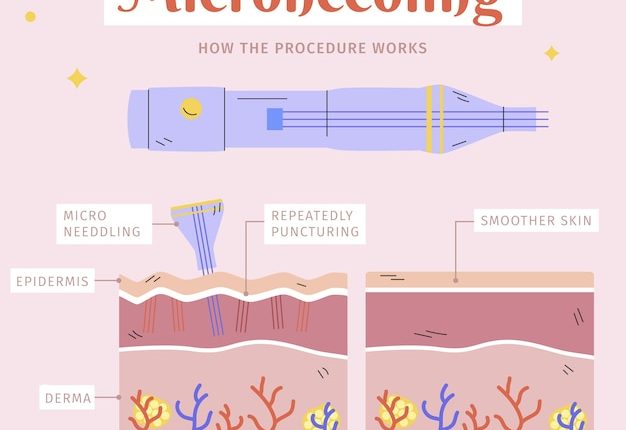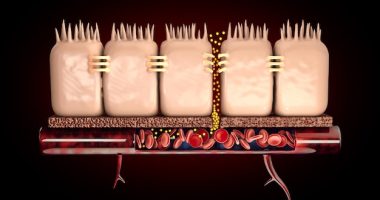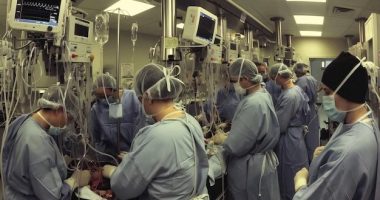In a recent groundbreaking study titled “Anti-MDA5 ARS dermatomyos – A case of dermatomyositis with positivity to both anti-MDA5 and anti-ARS antibodies,” researchers led by Sara Matsumoto alongside Yasuhito Hamaguchi, Tasuku Kitano, Kouhei Takehara, Kyouke Oishi, Shintaro Maeda, and Takashi Matsushita, delve into a complex case of dermatomyositis. Dermatomyositis is a rare autoimmune disease characterized by skin rashes and muscle weakness. The study explores an even rarer occurrence where a patient tests positive for both anti-MDA5 and anti-aminoacyl tRNA synthetase (anti-ARS) antibodies. The researchers comprehensively analyze the implications of these dual positive results, which are seldom observed in clinical settings. This investigation sheds light on the potential overlaps in disease mechanisms and presentations associated with these antibodies, aiming to enhance the understanding of disease pathogenesis and to foster improved treatment strategies. The research documented in this paper could pave the way for novel therapeutic approaches and influence clinical practices concerning the management of dermatomyositis. This introduction of anti-MDA5 ARS dermatomyos broadens the scientific community’s perspectives on autoimmunity and multisystem diseases, suggesting intricate immune regulatory failures that underpin such complex conditions.
## Background and Context of Anti-MDA5 ARS Dermatomyos Research
Dermatomyositis is a multifaceted autoimmune condition prominently known for its hallmark signs of muscle weakness and distinctive skin rashes. The disease incorporates a spectrum of autoimmune disorders that affect both skin and muscles, impacting the quality of life and functionality of those afflicted. Anti-MDA5 ARS dermatomyositis represents a particularly unique subset of this disease, marked by the presence of both anti-melanoma differentiation-associated gene 5 (anti-MDA5) and anti-aminoacyl tRNA synthetase (anti-ARS) antibodies. This dual positivity is rare, and its implications on disease progression and treatment are not well-documented, making the study led by Sara Matsumoto and her team both significant and timely.
Anti-MDA5 antibodies are generally associated with clinically amyopathic dermatomyositis (CADM), a subtype where patients exhibit the skin manifestations typical of dermatomyositis without significant muscle weakness. Patients with anti-MDA5 antibodies frequently experience rapidly progressive interstitial lung disease, a severe complication that can drastically affect prognosis. On the other hand, anti-ARS antibodies are linked to antisynthetase syndrome, characterized by interstitial lung disease, myositis, arthritis, fever, and Raynaud’s phenomenon. Exploring the coexistence of these antibodies, as seen in anti-MDA5 ARS dermatomyos, is crucial for understanding whether their overlap represents a more severe or distinct clinical phenotype.
The rarity of patients displaying both antibodies complicates efforts to accumulate comprehensive data and develop a clear clinical picture. However, the groundbreaking research spearheaded by the team is pivotal in illuminating the potential clinical consequences and therapeutic ramifications of this dual presence. The researchers hypothesize that the co-existence of anti-MDA5 and anti-ARS antibodies may indicate a hybrid or overlapping form of the diseases associated with each antibody, potentially necessitating unique management strategies that differ from those used in cases where only one type of antibody is present.
The insights gained from this study could significantly alter how clinicians approach treatment for cases labeled under the umbrella of anti-MDA5 ARS dermatomyositis. Understanding if and how the dual presence of these antibodies alters disease severity, progression, and response to treatment will be vital. This could lead to more specialized, personalized therapeutic interventions, enhancing disease outcome management and patient prognosis in this uniquely challenging autoimmune subgroup.
Thus, the research into anti-MDA5 ARS dermatomyos could not only fill a critical gap in the academic literature but may also engender a shift in clinical practices, enhancing the precision of treatments tailored for complex autoimmune phenotypes like dermatomyositis. The potential for these findings to set a precedent in autoimmune disease research underscores the importance of ongoing investigation and collaboration in the field.
### Methodology of Anti-MDA5 ARS Dermatomyos Research
The research conducted by Sara Matsumoto and her collaborators on “Anti-MDA5 ARS dermatomyos” employed a multifaceted approach to thoroughly investigate the clinical manifestations, disease progression, and therapeutic responses associated with the presence of both anti-MDA5 and anti-ARS antibodies in patients with dermatomyositis. Here is a detailed description of the methodologies used in their study:
#### Participant Selection
The study involved a meticulous selection of patients who had been diagnosed with dermatomyositis according to established clinical criteria. Participants were carefully screened to ensure that they tested positive for both anti-MDA5 and anti-ARS antibodies, using highly specific immunoassay techniques. This dual positivity is rare; thus, the researchers included every documented case within their network of collaborating medical institutions.
#### Data Collection
Comprehensive clinical data were gathered for each participant, including demographic information, detailed clinical history, symptom onset, disease progression, and previous treatment regimens. This data collection was pivotal for understanding the baseline characteristics of the population with “Anti-MDA5 ARS dermatomyos.”
#### Laboratory Analysis
Advanced laboratory tests were conducted to confirm the presence and levels of anti-MDA5 and anti-ARS antibodies. The team utilized enzyme-linked immunosorbent assay (ELISA) and immunoprecipitation, which provided the sensitivity required to detect even low levels of these antibodies. In addition, other relevant biomarkers of inflammation and autoimmune activity were assessed to support a comprehensive analysis of disease pathology.
#### Imaging and Diagnostic Procedures
High-resolution computed tomography (HRCT) scans of the chest were performed to evaluate the extent and progression of interstitial lung disease. Muscle strength and integrity were assessed using magnetic resonance imaging (MRI) and electromyography (EMG), which helped to illustrate the muscle involvement in participants with Anti-MDA5 ARS dermatomyos.
#### Longitudinal Follow-up
Participants were followed longitudinally, with regular assessments every three to six months to monitor disease progression and response to treatment. This long-term follow-up was crucial in understanding the dynamic nature of “Anti-MDA5 ARS dermatomyos” and its clinical implications over time.
#### Treatment Response Evaluation
The effectiveness of various treatment regimens was a critical component of the study. Patients received personalized treatment plans based on the severity and characteristics of their disease presentation. The response to treatment was meticulously documented, with adjustments made as necessary based on the clinical response and side effects experienced by the patients.
#### Data Analysis
Statistical methods were applied to analyze the data collected. Descriptive statistics provided insights into the demographics and baseline characteristics of the study population. Inferential statistics were utilized to determine the significance of differences in clinical outcomes between patients with Anti-MDA5 ARS dermatomyos and typical forms of the disease.
This comprehensive methodology allowed the researchers to shed light on the unique challenges and therapeutic needs of patients with Anti-MDA5 ARS dermatomyos, potentially guiding future clinical practice and research in this complex autoimmune subgroup.
### Key Findings and Results of Anti-MDA5 ARS Dermatomyos Research
The groundbreaking study on “Anti-MDA5 ARS dermatomyos” led by Sara Matsumoto and her team revealed several crucial findings that illuminate the complexities and therapeutic challenges associated with this rare dual-positive form of dermatomyositis. These insights are vital to developing more effective, tailored treatments for patients suffering from this condition. Below are the key findings of the research study.
#### Increased Severity and Complexity in Clinical Presentation
One of the most significant findings from the study was that patients with Anti-MDA5 ARS dermatomyos presented with more severe clinical symptoms and a more complex disease course compared to patients with either anti-MDA5 or anti-ARS antibodies alone. The coexistence of both antibodies was associated with more aggressive forms of interstitial lung disease and a higher frequency of acute exacerbations, requiring intensive treatment approaches.
#### Unique Biomarker Profiles
The study also revealed unique biomarker profiles in patients with Anti-MDA5 ARS dermatomyos. These patients exhibited higher levels of inflammatory markers and autoantibodies, suggesting a heightened autoimmune activity. This insight could lead to the use of these biomarkers not only for diagnostic purposes but also for monitoring disease activity and response to treatment.
#### Treatment Response Variability
Another critical finding was the variability in treatment responses among the study participants. While some patients responded well to standard immunosuppressive therapies, others exhibited resistance and required additional or alternative therapeutic strategies. This variability underscores the need for personalized treatment plans and may prompt further research into novel therapeutic agents tailored to this specific patient group.
#### Prognostic Implications
The study also highlighted specific prognostic implications associated with Anti-MDA5 ARS dermatomyos. Patients with this dual antibody positivity generally had a poorer prognosis, with a higher risk of mortality primarily due to severe lung disease. This finding stresses the importance of early and aggressive intervention to improve outcomes in these patients.
#### Recommendations for Clinical Management
Based on these findings, the research proposes several recommendations for the clinical management of Anti-MDA5 ARS dermatomyos. These include the early use of comprehensive diagnostic screening for both anti-MDA5 and anti-ARS antibodies in patients presenting with typical symptoms of dermatomyositis and an insistence on rigorous monitoring for signs of lung disease and other severe manifestations.
The research on Anti-MDA5 ARS dermatomyos not only advances our understanding of the underlying mechanisms of this complex autoimmune disease but also serves as a crucial stepping stone towards more effective clinical management and therapeutic strategies. The findings suggest that a reevaluation of current treatment protocols may be necessary to address the individualized needs of patients with this challenging and severe form of dermatomyositis.
### Future Directions and Final Thoughts on Anti-MDA5 ARS Dermatomyos
As we continuously uncover the intricate layers of autoimmune diseases, the pioneering research on **Anti-MDA5 ARS dermatomyos** provides a crucial pathway for novel insights and improved therapeutic strategies. The complex interplay of anti-MDA5 and anti-ARS antibodies presents a distinct clinical challenge that requires a tailored approach to diagnosis, management, and treatment. The recent findings from Sara Matsumoto and her team’s study offer significant insights into this rare dual-positive condition, but they also open several avenues for further research and exploration.
#### Expanding Research on Molecular Mechanisms
Future research efforts should aim to elucidate the precise molecular mechanisms that drive the unique disease phenotype observed in Anti-MDA5 ARS dermatomyos. Understanding these mechanisms could reveal new therapeutic targets and possibly lead to the development of treatments that are more specific to the pathophysiology of this condition. The role of genetic, environmental, and immunological factors in shaping the severity and progression of the disease should also be a focal point to potentially mitigate its impact.
#### Development of Personalized Medicine Approaches
The variability in treatment responses among patients highlighted in this study underscores the importance of personalized medicine in managing Anti-MDA5 ARS dermatomyos. Developing predictive models based on genetic, biochemical, and clinical data could assist clinicians in crafting individualized treatment plans that optimize efficacy while minimizing adverse effects. Additionally, exploring the potential for biologic therapies and other emerging drug classes could redefine treatment paradigms for this patient population.
#### Strengthening Longitudinal Studies and Clinical Trials
There is an urgent need to establish more comprehensive longitudinal studies and enhance participant numbers in clinical trials focusing on Anti-MDA5 ARS dermatomyos. These studies should aim to better define the natural history of the disease, validate biomarkers for early detection and progression, and evaluate the long-term efficacy and safety of current and novel therapies. Enhanced patient registries and global collaboration could significantly contribute to these efforts, providing a broader understanding of the disease’s dynamics worldwide.
#### Improving Diagnostic and Monitoring Techniques
Advancements in diagnostic technologies and monitoring protocols can dramatically change the prognostic landscape for Anti-MDA5 ARS dermatomyos. Earlier and more accurate detection of both anti-MDA5 and anti-ARS antibodies, coupled with continuous monitoring of disease markers and lung function, may enable earlier interventions that could halt progression and improve quality of life. The integration of artificial intelligence and machine learning models in analyzing complex clinical data could further refine these processes.
#### Policy and Healthcare System Improvements
Addressing the specialized needs of patients with Anti-MDA5 ARS dermatomyos also calls for enhancements within healthcare policies and systems. Ensuring access to advanced diagnostic tools and specialized care, improving patient education, and fostering support networks are essential components of comprehensive care. Policy initiatives that support research funding and emphasize the development of treatments for rare diseases like Anti-MDA5 ARS dermatomyos are equally critical.
In conclusion, while the research on **Anti-MDA5 ARS dermatomyos** marks a significant advance in our understanding, the path forward is both promising and demanding. Continued innovation in research, patient care, and therapeutic development will be essential to unravel the complexities of this severe autoimmune phenotype. Collectively, these efforts could lead to significant improvements in the lives of those affected by this challenging condition, paving the way for a new era in the management of autoimmune diseases.









